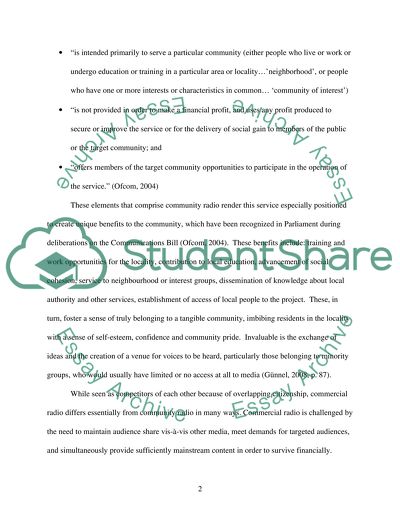Cite this document
(Social Integration of Bristol Community Radio Case Study, n.d.)
Social Integration of Bristol Community Radio Case Study. Retrieved from https://studentshare.org/social-science/1565129-analyse-a-case-study-of-community-radio
Social Integration of Bristol Community Radio Case Study. Retrieved from https://studentshare.org/social-science/1565129-analyse-a-case-study-of-community-radio
(Social Integration of Bristol Community Radio Case Study)
Social Integration of Bristol Community Radio Case Study. https://studentshare.org/social-science/1565129-analyse-a-case-study-of-community-radio.
Social Integration of Bristol Community Radio Case Study. https://studentshare.org/social-science/1565129-analyse-a-case-study-of-community-radio.
“Social Integration of Bristol Community Radio Case Study”. https://studentshare.org/social-science/1565129-analyse-a-case-study-of-community-radio.


